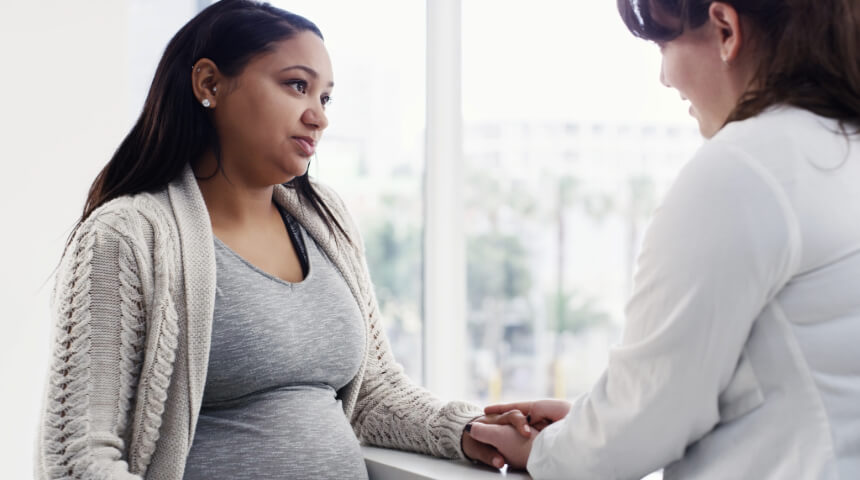Can Varicose Veins During Pregnancy Be Prevented?
Anyone can get varicose veins, but pregnant women are particularly susceptible. The condition is relatively painless, though the blue- or red-colored veins can be unsightly. What are varicose veins, what causes them and how can you prevent or treat them?
Veins are the structures that carry deoxygenated blood back to your heart. Some of these veins, like those in your legs, help carry blood upward against gravity as blood travels from your lower body to your upper body. Veins have built-in, one-way valves to stop blood from flowing backward.
When these valves become damaged or weak, blood flows backward, and it can pool in the veins rather than continue toward your heart. This causes veins to stretch or twist, and that’s when they become visible. Varicose veins often occur on the legs, ankles and feet, but during pregnancy, they can also appear on the buttocks, inner thigh and lower pelvic region.
Causes and Complications
The primary causes of varicose veins include:
· Standing or sitting for long periods of time
· Inactivity
· Family history of vein problems
· Smoking
· Pregnancy
· Previous blood clot, injury or recent surgery
Most of the time varicose veins aren’t a cause for concern. While dangerous complications can occur, they're rare. Potential complications include:
· Blood clots
· Minor bleeding close to the skin
· Dermatitis
· Superficial venous thrombosis
· Phlebitis (vein inflammation)
· Chronic venous insufficiency
Why Are Varicose Veins Common During Pregnancy?
Thanks to increased blood volume during pregnancy, women have a 40 percent higher chance of getting varicose veins.
The blood volume in pregnancy increases sometimes as much as 20 percent, but the number of veins remains the same. This means that there's more work to be done by the vascular system, as blood can collect more in the veins of the feet and legs. On top of that, the uterus starts growing, which puts a lot of pressure on one of your largest veins right behind it, called the inferior vena cava. This causes compression and more collection of blood in those veins of the lower extremities.
This increase in blood volume begins as early as the fourth week of pregnancy and peaks around 28 to 34 weeks. So, as pregnancy progresses, varicose veins likely will worsen throughout the second and third trimester. When the uterus grows bigger, those veins can become more visible and symptomatic, such as showing redness around the area and feeling crampy.
How To Prevent Varicose Veins?
While no specific studies clearly show that you can prevent varicose veins, you can follow some steps that might reduce your risk for getting varicose veins. It’s recommended pregnant women:
· Exercise daily.
· Stay within the recommend weight range for your stage in pregnancy.
· At night, elevate your feet and legs to the level of your heart.
· Don’t cross your legs or ankles while sitting.
· Move around or get up from your chair every two hours to improve blood flow.
· Wear compression socks or stockings, which can help with that crampy feeling you might be experiencing from the varicose veins.
If you do get varicose veins, don’t worry. They often improve or go away completely about three or four months after giving birth. However, if varicose veins were present before pregnancy and then worsened, they’re probably going to stay there for a while.
Are You Interested in Learning More About Women's Health?
Sign up for our e-newsletter to have the latest health and wellness news from Orlando Health Winnie Palmer Hospital for Women & Babies delivered to your inbox.
Learn More










